Linling Li
HA-HI: Synergising fMRI and DTI through Hierarchical Alignments and Hierarchical Interactions for Mild Cognitive Impairment Diagnosis
Jan 02, 2024Abstract:Early diagnosis of mild cognitive impairment (MCI) and subjective cognitive decline (SCD) utilizing multi-modal magnetic resonance imaging (MRI) is a pivotal area of research. While various regional and connectivity features from functional MRI (fMRI) and diffusion tensor imaging (DTI) have been employed to develop diagnosis models, most studies integrate these features without adequately addressing their alignment and interactions. This limits the potential to fully exploit the synergistic contributions of combined features and modalities. To solve this gap, our study introduces a novel Hierarchical Alignments and Hierarchical Interactions (HA-HI) method for MCI and SCD classification, leveraging the combined strengths of fMRI and DTI. HA-HI efficiently learns significant MCI- or SCD- related regional and connectivity features by aligning various feature types and hierarchically maximizing their interactions. Furthermore, to enhance the interpretability of our approach, we have developed the Synergistic Activation Map (SAM) technique, revealing the critical brain regions and connections that are indicative of MCI/SCD. Comprehensive evaluations on the ADNI dataset and our self-collected data demonstrate that HA-HI outperforms other existing methods in diagnosing MCI and SCD, making it a potentially vital and interpretable tool for early detection. The implementation of this method is publicly accessible at https://github.com/ICI-BCI/Dual-MRI-HA-HI.git.
Semi-Supervised Dual-Stream Self-Attentive Adversarial Graph Contrastive Learning for Cross-Subject EEG-based Emotion Recognition
Aug 13, 2023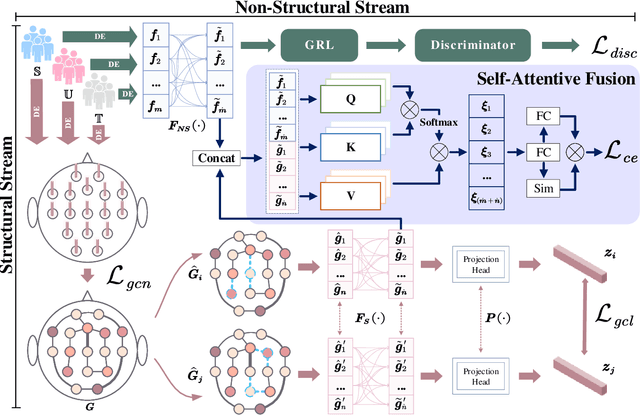
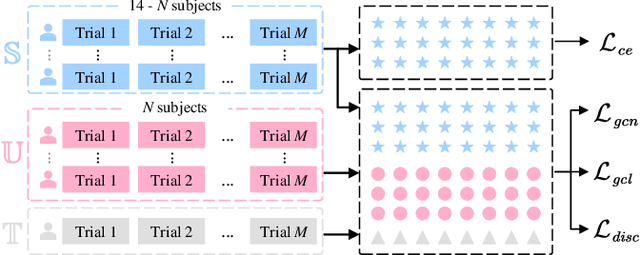
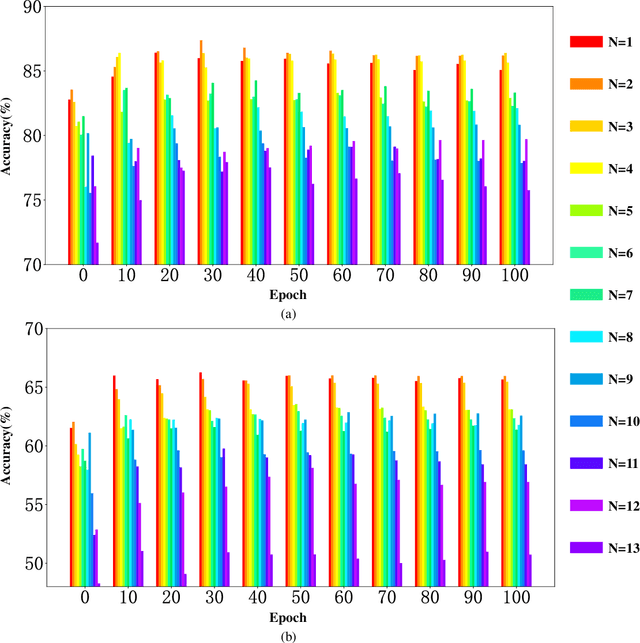

Abstract:Electroencephalography (EEG) is an objective tool for emotion recognition with promising applications. However, the scarcity of labeled data remains a major challenge in this field, limiting the widespread use of EEG-based emotion recognition. In this paper, a semi-supervised Dual-stream Self-Attentive Adversarial Graph Contrastive learning framework (termed as DS-AGC) is proposed to tackle the challenge of limited labeled data in cross-subject EEG-based emotion recognition. The DS-AGC framework includes two parallel streams for extracting non-structural and structural EEG features. The non-structural stream incorporates a semi-supervised multi-domain adaptation method to alleviate distribution discrepancy among labeled source domain, unlabeled source domain, and unknown target domain. The structural stream develops a graph contrastive learning method to extract effective graph-based feature representation from multiple EEG channels in a semi-supervised manner. Further, a self-attentive fusion module is developed for feature fusion, sample selection, and emotion recognition, which highlights EEG features more relevant to emotions and data samples in the labeled source domain that are closer to the target domain. Extensive experiments conducted on two benchmark databases (SEED and SEED-IV) using a semi-supervised cross-subject leave-one-subject-out cross-validation evaluation scheme show that the proposed model outperforms existing methods under different incomplete label conditions (with an average improvement of 5.83% on SEED and 6.99% on SEED-IV), demonstrating its effectiveness in addressing the label scarcity problem in cross-subject EEG-based emotion recognition.
EEGMatch: Learning with Incomplete Labels for Semi-Supervised EEG-based Cross-Subject Emotion Recognition
Mar 27, 2023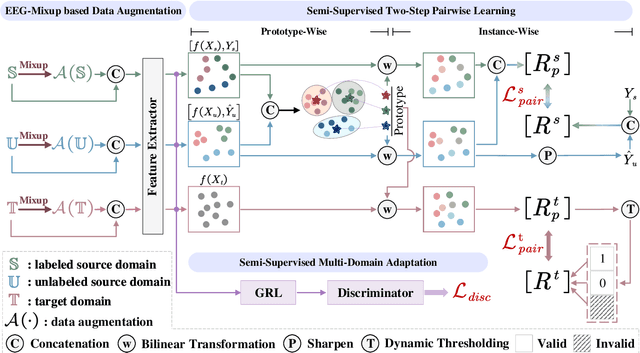


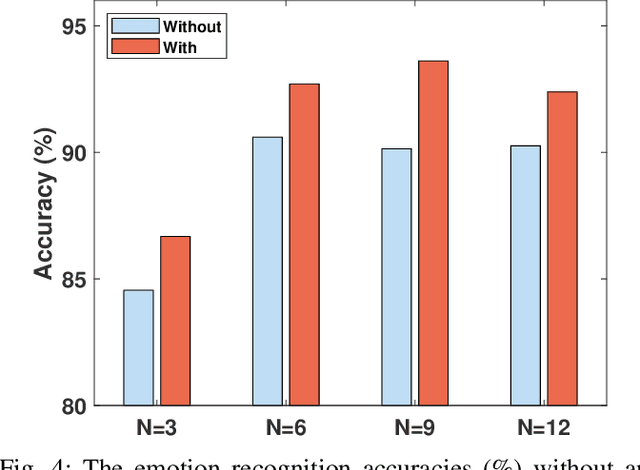
Abstract:Electroencephalography (EEG) is an objective tool for emotion recognition and shows promising performance. However, the label scarcity problem is a main challenge in this field, which limits the wide application of EEG-based emotion recognition. In this paper, we propose a novel semi-supervised learning framework (EEGMatch) to leverage both labeled and unlabeled EEG data. First, an EEG-Mixup based data augmentation method is developed to generate more valid samples for model learning. Second, a semi-supervised two-step pairwise learning method is proposed to bridge prototype-wise and instance-wise pairwise learning, where the prototype-wise pairwise learning measures the global relationship between EEG data and the prototypical representation of each emotion class and the instance-wise pairwise learning captures the local intrinsic relationship among EEG data. Third, a semi-supervised multi-domain adaptation is introduced to align the data representation among multiple domains (labeled source domain, unlabeled source domain, and target domain), where the distribution mismatch is alleviated. Extensive experiments are conducted on two benchmark databases (SEED and SEED-IV) under a cross-subject leave-one-subject-out cross-validation evaluation protocol. The results show the proposed EEGmatch performs better than the state-of-the-art methods under different incomplete label conditions (with 6.89% improvement on SEED and 1.44% improvement on SEED-IV), which demonstrates the effectiveness of the proposed EEGMatch in dealing with the label scarcity problem in emotion recognition using EEG signals. The source code is available at https://github.com/KAZABANA/EEGMatch.
EEGFuseNet: Hybrid Unsupervised Deep Feature Characterization and Fusion for High-Dimensional EEG with An Application to Emotion Recognition
Feb 07, 2021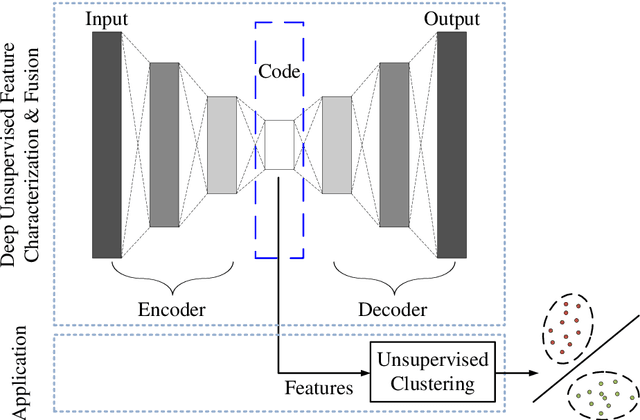
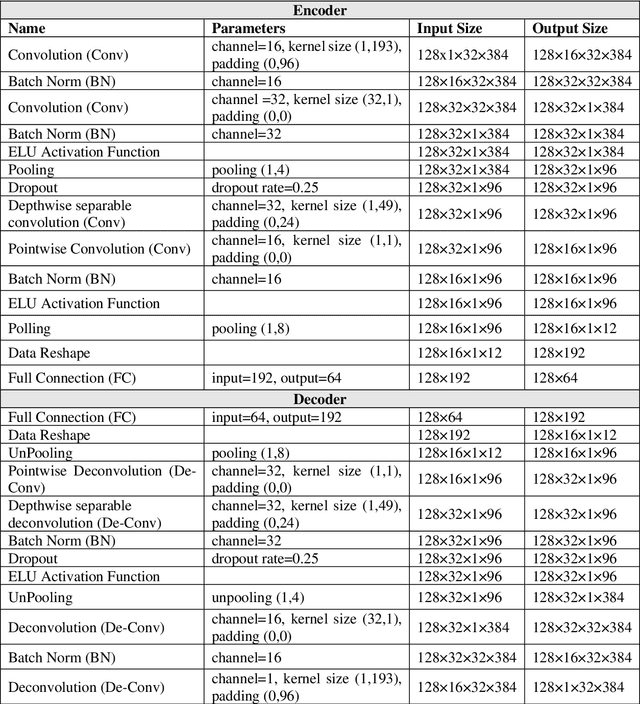
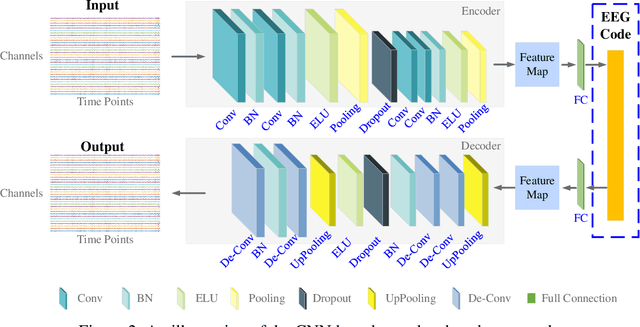
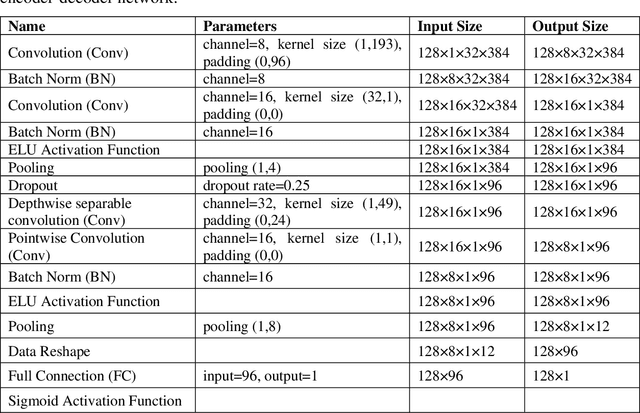
Abstract:How to effectively and efficiently extract valid and reliable features from high-dimensional electroencephalography (EEG), particularly how to fuse the spatial and temporal dynamic brain information into a better feature representation, is a critical issue in brain data analysis. Most current EEG studies are working on handcrafted features with a supervised modeling, which would be limited by experience and human feedbacks to a great extent. In this paper, we propose a practical hybrid unsupervised deep CNN-RNN-GAN based EEG feature characterization and fusion model, which is termed as EEGFuseNet. EEGFuseNet is trained in an unsupervised manner, and deep EEG features covering spatial and temporal dynamics are automatically characterized. Comparing to the handcrafted features, the deep EEG features could be considered to be more generic and independent of any specific EEG task. The performance of the extracted deep and low-dimensional features by EEGFuseNet is carefully evaluated in an unsupervised emotion recognition application based on a famous public emotion database. The results demonstrate the proposed EEGFuseNet is a robust and reliable model, which is easy to train and manage and perform efficiently in the representation and fusion of dynamic EEG features. In particular, EEGFuseNet is established as an optimal unsupervised fusion model with promising subject-based leave-one-out results in the recognition of four emotion dimensions (valence, arousal, dominance and liking), which demonstrates the possibility of realizing EEG based cross-subject emotion recognition in a pure unsupervised manner.
 Add to Chrome
Add to Chrome Add to Firefox
Add to Firefox Add to Edge
Add to Edge